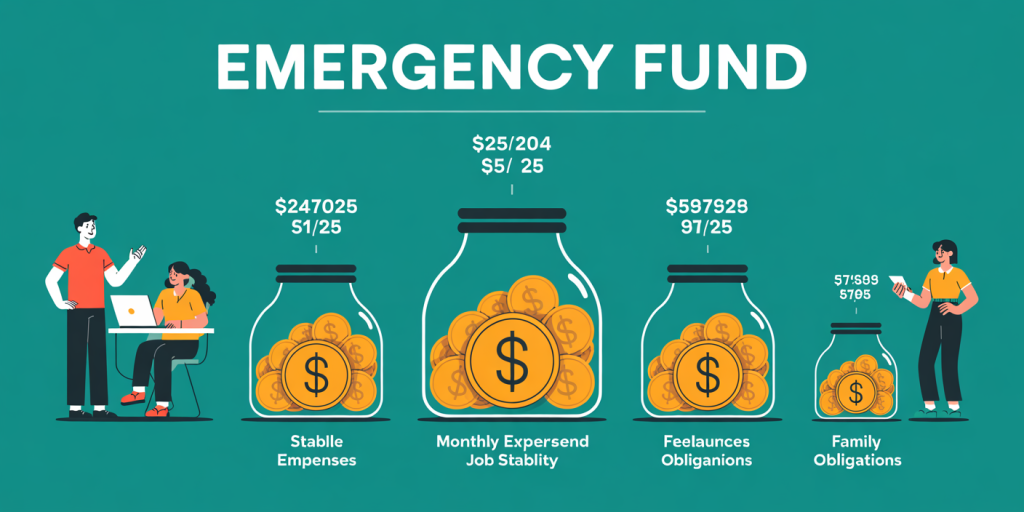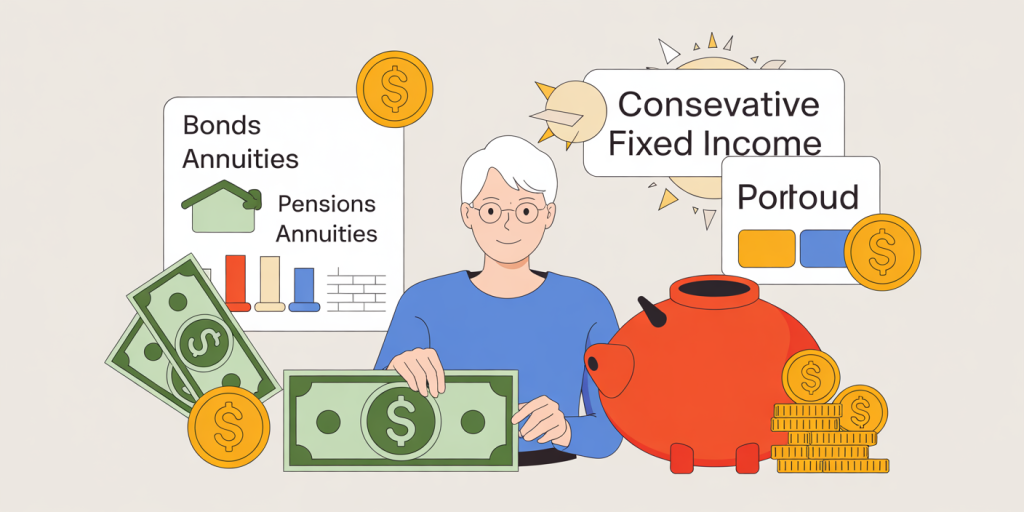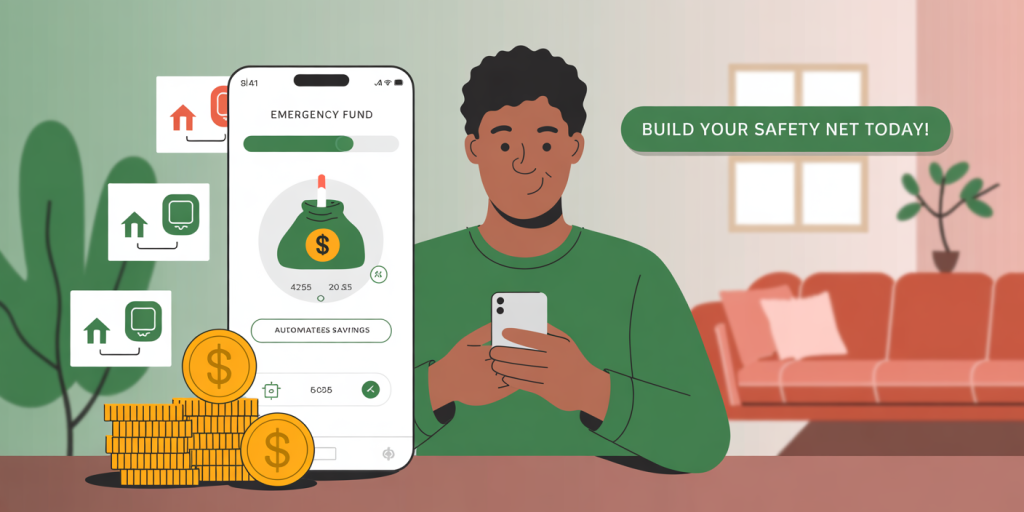Emergency Funds 101: How Much You Need and How to Save It
Financial stability is a cornerstone of modern life, but unexpected expenses can quickly destabilize even the most carefully planned budgets. An emergency fund acts as a financial safety net, providing peace of mind and preventing debt accumulation when unforeseen circumstances arise. Understanding how much you need to save and the most effective strategies to build this fund is crucial in fostering long-term financial security.
Emergency funds play a vital role in cushioning against events such as job loss, medical emergencies, car repairs, or urgent home maintenance. According to a recent survey conducted by the Federal Reserve in 2023, nearly 36% of Americans would struggle to cover a $400 emergency expense, highlighting the need for a readily available financial reserve. This article breaks down the essential components of emergency funds, offering practical advice to evaluate your needs and save efficiently.
—
Calculating the Right Amount for Your Emergency Fund
Determining how much money you should keep in your emergency fund depends on several factors, including your monthly expenses, job stability, health status, and family obligations. A general guideline recommended by financial experts is to save between three to six months’ worth of essential living expenses. However, this recommendation should be personalized.

For example, if you are in a stable job with consistent income and minimal debts, three months of expenses might suffice. Conversely, freelancers, self-employed individuals, or those with dependents might require up to a year’s worth of savings. Suppose your monthly fixed expenses—including rent, utilities, groceries, transportation, and insurance—total $3,000. According to the three-to-six-month guideline, your emergency fund should range from $9,000 to $18,000.
| Income Stability | Recommended Fund Size |
|---|---|
| Stable employment | 3-6 months of expenses |
| Freelancers/Self-employed | 6-12 months of expenses |
| High-risk industries | 6-12 months of expenses |
| Families with dependents | 6-12 months of expenses |
Consider real-life case studies: Jane, a marketing executive with a steady paycheck and no dependents, saved up $10,000 to cover four months of expenses. Meanwhile, Tom, a freelance photographer supporting two children, felt more comfortable building a $24,000 emergency fund, covering eight months, to mitigate his irregular income.
—
Types of Expenses to Include in Your Emergency Fund
Not all expenses should be counted when calculating an emergency fund. The goal is to cover essential costs that you cannot avoid payment on, rather than discretionary or lifestyle expenses. Essentials include: Housing costs (rent or mortgage) Utilities (electric, water, gas, internet) Food and groceries Transportation (fuel, car payment, insurance) Minimum debt payments Medical expenses not covered by insurance
Avoid including luxury expenses such as dining out, vacations, or premium subscription services. These costs can be scaled back or eliminated temporarily to stretch your emergency fund further during tough times.
For example, consider Sarah, who included gym memberships in her emergency budget initially. When she lost her job, she realized these were avoidable costs and adjusted her fund needs accordingly. By refining her emergency fund to cover only genuine essential expenses, she decreased her target savings, making it more achievable within her budget.

—
Practical Strategies to Build Your Emergency Fund
Building a sizable emergency fund can seem daunting, especially for those living paycheck to paycheck. However, adopting consistent, strategic saving habits can make this goal manageable over time.
Prioritize Savings in Your Budget
Start by examining your monthly budget and identifying non-essential expenses to redirect toward your emergency fund. Automating your savings using direct transfers to a separate high-yield savings account ensures consistent contributions without the temptation to spend. For instance, setting aside $200 per month can accumulate $2,400 over a year, which brings you close to a substantial base emergency fund for many households.
Use Windfalls and Bonuses Wisely
Tax refunds, work bonuses, or gift money are ideal opportunities to boost emergency savings. A case in point is Carlos, who dedicated every extra paycheck he received from overtime work exclusively to his emergency fund. This catapulted his savings from zero to covering six months within two years.

Leverage Employer Benefits and Apps
Some employers offer programs that encourage savings via automatic paycheck deductions. Additionally, numerous apps round up your daily purchases and deposit the spare change into savings accounts, helping build funds painlessly over time.
—
The Role of Emergency Funds in Debt Management and Mental Health
Having an emergency fund not only prevents additional debt but also positively impacts emotional well-being. When unexpected costs arise, the absence of savings often forces individuals to rely on credit cards or loans, potentially leading to long-term financial strain with high-interest payments.
Statistically, a 2022 study by the National Endowment for Financial Education showed that individuals without emergency savings were 70% more likely to resort to credit cards to cover sudden expenses. This reliance increases the probability of falling into a debt spiral.
Besides finances, emergency funds alleviate anxiety linked to economic uncertainty. Consider the example of Lisa, who faced a sudden job loss but remained calm due to her six-month emergency fund coverage. This allowed her to focus on job hunting without the pressure of immediate financial distress, demonstrating the psychological benefits of preparedness.
—
Assessing When and How to Use Your Emergency Fund
Knowing when to tap into your emergency fund is as crucial as building it. This fund is exclusively for genuine emergencies—unexpected, urgent, and essential expenses—not for planned purchases or minor inconveniences. Examples of legitimate scenarios include job loss, medical emergencies, urgent home repairs, or essential vehicle repairs.
Premature or frequent withdrawals from these savings undermine their purpose. It’s common to face dilemmas such as “Should I use my emergency fund to renovate the kitchen or pay for a vacation?” The answer invariably leans toward preserving the fund for true crises.
Create a list or mental checklist of what constitutes an emergency to avoid impulse spending. If the expense can be deferred or financed otherwise (with manageable interest), consider those options first.
—
Future Perspectives: Evolving Needs and Maintaining Your Emergency Fund
As your life evolves, so should your emergency fund. Periodic reviews of your financial situation are critical to ensure your savings adequately reflect changes in expenses, income stability, and personal circumstances. For example, welcoming a child or purchasing a home significantly changes your monthly costs and might warrant increasing your emergency fund.
Forecasting economic trends also aids in emergency fund planning. The International Monetary Fund (IMF) projects increased economic volatility in the coming decade due to global political and climate factors, highlighting the importance of maintaining or even increasing financial buffers.
Investing emergency funds in low-risk, liquid accounts remains advisable, as quick accessibility is essential during emergencies. Balancing funds between a traditional savings account and online high-yield accounts can optimize interest earnings without sacrificing liquidity.
In summary, building and maintaining an emergency fund is a dynamic and continuous process, intimately tied to your personal and economic environment. The peace of mind it offers is invaluable, enabling better financial decisions and resilience in uncertain times.
—
Maintaining an adequate emergency fund is a foundational step toward financial wellbeing. By accurately calculating your needs, focusing on essential expenses, employing effective saving strategies, and reviewing your fund regularly, you can ensure you are prepared for life’s uncertainties. This foresight is not just about money but securing confidence and stability in the face of the unknown.
